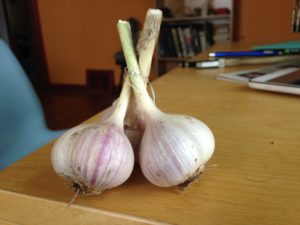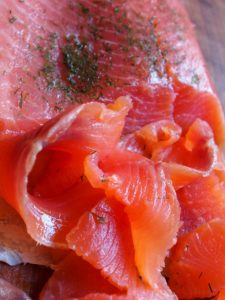Somewhere North of Tucson
After a drawing by Robert Hale
A quiver of flaming arrows hangs high
In a restless blue sky.
Buttes, the color of ancient blood, and
A pile of bleached bones, spilled on the floor of arroyo seco
Hum along with the song of the saguaros.
The desert here breathes long and shallow,
The sand and rocks swallow the heat
Before it devours me.
I was supposed to meet someone here once
[We’ve all been there].
The rendezvous turned out to be a mirage
I cast my dilemma to the four corners not
Drawing so much as an echo.
So, I planted my tent stakes among the gilas and javelinas,
Learned to catch flaming arrows barehanded, and sold jewelry
Made from polished buffalo dung to tourists.
Something about the sparseness quenches a thirst.
At night, you can watch time travel, spiraling in sync with the galaxies.
I’ve learned to get on with the mirages and talking cactus.
Today, my tent wore out, I surrendered.
I drew myself next to a saguaro and skull with horns
And became part of the landscape.
The Last Peach
In the deepest depths of August
Even hotter than July
I harvested tomatoes
Red falling from the vine
In the kitchee in a bowl
Fruit flies buzzing near
Cuts a solitary figure
The last peach of the year
That fuzzywuzzy orb
The color of fiery skies
Patience has restrained my bite
Till the moment divine arrives
[Whooosh] like a zephyr you appear
Wearing nothing but a smile
Like Venus on the half shell
In twenty first century style
You sink your fangs into the flesh and
Rivulets of gold cascade
Over your lips and chin and breast
Sounds of splendid pleasure made
If it were anyone else but you
I’d have sent a fleet of harpies
To reclaim that golden treasure
And hide it in the berries
Now the sweetest prize has gone
Where summer goes to rest
i’ll settle for canned peaches
And enjoy that delicious mess
Cat got your tongue
Mother tongue or
Another tongue
Tongue twister or
Freudian slip
It’s on the tip if my tongue
Baked, boiled, pickled or pierced
Speaks in tongues
Tongues of fire
Licking licking licking
Wagging wagging wagging
Silver tongue
Forked tongue
Sharp tongue
Bite your tongue
or
Get a good tongue lashing
Tongue in cheek
Tongue and groove
Clucking, ticking, kissing, hissing
Stick out your tongue!
[Raspberries!]
Summer Solstice 2022
The sun rose hot on
This longest day’s rays.
Morning Mercury passes 90
Racing fans that can’t keep up.
I’m splayed on the queen
Like a sunnyside up on a mound
Of home fries.
Perched on a single elbow
my pen prospects for gems.
Just another day in the Anthropocene
The world is inflamed.
To cool us off, we throw fossils on the pyre.
The little blue dot is in flames and
running short of water.
There is a green fly on my thigh
Ratcheting over skin and hair.
My Cenozoic friend can take the heat
But not the beat of a newspaper swatter.
Acrobatic buzzing, aimless flight
Corruption, consumption, profit uber alles.
I roll over on the queen.
The ceiling is a spiraling starry sky.
First Flakes – Multiple Choice Haiku
Stillness, first snowflakes fall
Red leaves glow on jeweled grass
Long nights till sap runs
2 bowls of miso soup
Moon barks at wet dog
Wet dog barks at moon
I forgot the password
Braided Water
My kitchen sink frames the story
A flip of the wrist and out it tumbles,
Cascades over rocky ledges of plates, swirling
Peas trapped in teacup eddies,
Riffles over spoons, then forks
Not like the river
It is the river we drink
The Misi-ziibi tunnels into our homes,
Overflows our lips,
Beating hearts hurry it along, sweeten each cell,
It surges through our veins out to sea, etches
Our arteries into the skin of the earth, weaves
Us into the watery web.
White water gray water black water brown
Contamination
Colonialism,
13 red and white stripes celebrate.
The Cuyahoga self-immolates in protest
Attempts to launder responsibility— fail.
Toxic fingerprints crawl all over the landscape.
Corporations are people, but no one claims the Dead Zone.
Consider the 18 million bodies sustained by this water.
Cultivate a vision of life downstream.
Listen to the river inside you.
Pareidolia
La vida te da sorpresas; sorpresas te da la vida. -Ruben Blades*
If you see my gaze perched in a Birch, it’s because I see faces everywhere, in trees and clouds, and even crumpled clothes and burned grilled cheese toast. Pareidolia! Always a surprise. It starts with a jab of light that reels in the eye; our powers then stitch the shades of dark and bright, re-drawing over the original vision. Grins and grimace, shock and shame, to some it’s halluc-ination, to me imag-ination. Consider for a moment, reading and writing as a form of symbolic halluc-ination, the image and moment stitched by our powers. As we write, words are hurled at us from an amorphous dictionary and captured by the same pen that draws the constellations and the face on the moon. I am always surprised by what’s in the ink.
*Life gives you surprises; surprises give you life.


